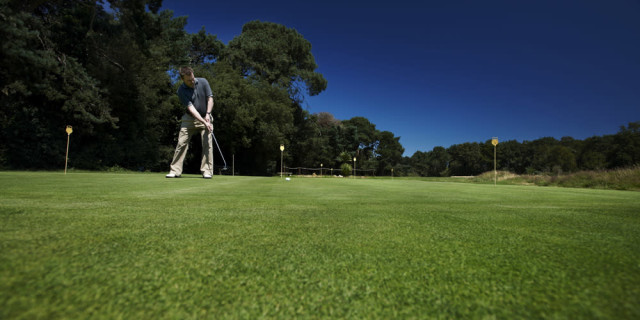
How to Get Yourself Back Into Golf After a Break
When taking a break from golf, it may be an intentional decision or it could happen naturally, but getting back into the sport can be troublesome.
If we spend too much time away from the course, we run the risk of losing ability, which could reverse months of practice.
Moreover, we remove the enjoyment that golf brings us and as long as we continue to enjoy our favourite hobby, we should always try to make time for it.
Featured Content
After a lengthy spell away from your clubs, it can seem quite daunting to get back into the swing of things - as Golfshake's Derek Clements has recently discovered.
If you’re someone who falls into this hiatus, then read below for some tips to help reintroduce you to the greatest sport of all - golf.
Practice Makes Perfect
When golfers leave the sport, there could be numerous reasons for their decision. Perhaps they failed to make the time for a round of golf or that their friends also hung up their clubs.
In regard to the schedule, you don’t have to return with an elongated round of golf - simply head to the driving range and hit a small bucket of balls.
Whilst many recreational golfers will tell you that the range isn’t the same as the course, it is the best place to improve your ability and increase your golfing prowess.
If you’ve been away from the sport for a while, make the effort and plan a trip to the range - the bug will be back before you know it!

Short Game Practice
This specific topic may be useful for golfers who are either carrying an injury or have recently overcome one.
Golfers - just like any other sportspeople - are susceptible to injury, which can lead to unwanted breaks away from the course.
Short game practice, however, doesn’t require as much physical effort as full swings, meaning you can practice your short game without being fully fit.
Furthermore, if you’ve taken an extended break away from the sport, then practicing your short game can act as a gentle reintroduction into recreational golf.
Considering a tidy short game is typically the difference between amateur golfers, you should work on it as much as humanely possible!
9-Hole Rounds
The stamina and focus required for an excellent round of golf is really challenging, especially if you’ve been away from the sport for a while.
How many times have you produced stellar golf for the first 15 holes, only for the dreaded fatigue to take over, before your decision-making became laughable.
The mental strength needed to produce a great round of golf should not be underestimated, so is it really wise to return with a full 18-hole round?
Ease yourself back into the sport by playing nine-hole rounds before progressing to the full 18 - your body will certainly thank you.
Stretching
For those who have been away from the sport for a substantial amount of time and do no other exercising such as gym work, stretching will be fundamental to your longevity with golf.
Stretching is mandatory before any exercise and this is especially true for older golfers who may have become more tense since last exercising.
Before any round of practice session, stretch out fully and you’ll reap the benefits in your performance, in addition to keeping your body fit and healthy.
We would recommend investing in a resistance band, as you’ll be able to stretch deeper and warm those muscles up for a gruelling round of golf.
Keep Emotions in Check
This is obvious but you’ll be surprised by the number of golfers who fail to contain their anger when out on the course, which will dampen the experience for all playing partners too.
Golf and fair are two words that do not go together. If you’re looking for a fair experience, then golf is about as far from that as possible.
Sometimes you’ll hit good shots that bounce poorly, other times you’ll thin a mid-iron from 180 yards that simply doesn’t stop rolling until it ends pin high - this is the nature of golf.
It’s important to remember, by giving in to your anger, you will be ruining the experience for yourself and others around you.
Air Swing
You’ll know when you’re ready to return to golf as you’ll be subconsciously air swinging your way through the day.
This is a good thing, however, as your body is effectively telling you that you’re ready to head back to the course or range.
You should also continue air swinging as you get back into golf, as it really helps to reinforce the mechanics of the swing.
If you don’t have practice facilities at home, film yourself swinging the club in your garden, which would give you insight into the path and the general aesthetic of your swing.
Getting back into golf after some time away can be difficult, but the reward should always inspire that initial action.
It will honestly take you just one experience before you fall back in love with the sport, questioning why you ever took such a hiatus.
The most important thing is to take action and get yourself to a course or range as soon as you can - welcome back to the world of golf!
Related Content
My Journey Back to Golf Has Been Painful
12 Ways to Become a Better Golfer This Year
Tags: GOLFERS Golf daily picks









